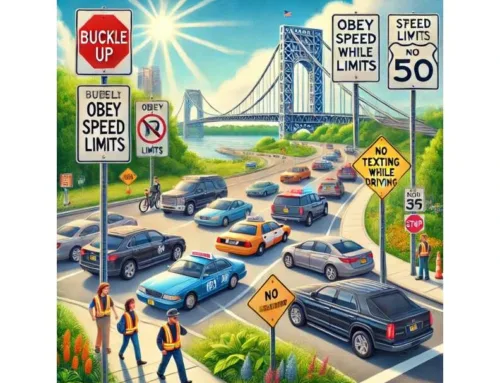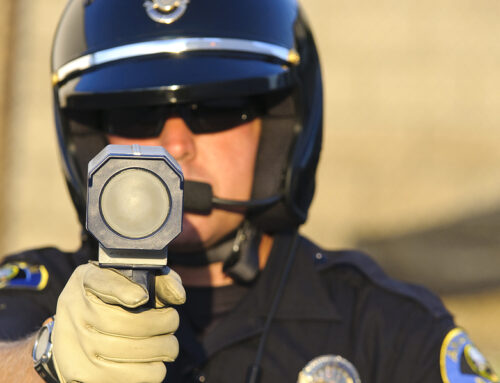On the morning of February 23 of this year, Tiger Woods was involved in a serious single-car collision when his vehicle left the roadway on a curved stretch of road in Rancho Palos Verdes, near Los Angeles, California. The sloping, windy roadway curved off to the right, but shortly after 7 AM, according to his vehicle’s event data recorder (or “black box”), Woods’ vehicle continued in a straight line, impacting first the roadway’s median as it moved into the oncoming lanes, then the curb on the opposite side of the road, and then a tree. This last impact sent the SUV into the air, whereupon it rolled over repeatedly until it finally came to rest on its side. Police report that Woods was speeding at the time of the accident, traveling at a speed between 84 and 87 miles per hour when he appeared to lose control, and impacting the tree at 75 m.p.h. The speed limit on that stretch of road is 45 m.p.h. Woods suffered serious injuries to both legs, including compound fractures to both bones in his lower right leg – meaning the broken bones had torn through the skin.

These facts of the Tiger Woods car crash are not in dispute, and certainly one could argue that driving at nearly double the 45 m.p.h. speed limit could be sufficient cause in itself for a crash like this. The stretch of Hawthorne Boulevard where the Tiger Woods accident took place has seen its share of crashes, with 13 other car accidents, four of which caused injuries (though only two of the accidents were single-car collisions) since January 3, 2020. One of the sheriff’s deputies responding to the scene of Woods’ car crash stated that seeing motorists taking that section of roadway at speeds upwards of 80 m.p.h. is not unheard of, so in that respect it seems that the Tiger Woods accident is hardly unique. Ultimately, police concluded that the accident was caused by driving too fast for road conditions and Woods’ “inability to negotiate the curve of the roadway” (though no speeding citation was issued). However, as dangerous as excessive speeding can be even in the absence of any other contributing factors, the police investigation of the Tiger Woods car crash has come under criticism for not looking as deeply into the matter as perhaps it should have.
What Did Investigators Overlook?
- First, forensic experts point out that there is no indication that Woods attempted to respond in any way to the curve of the road; he does not appear to have tried to brake or turn. There were no tire marks at the scene, and no spin on the vehicle’s trajectory. The SUV plowed ahead in a straight line until its wheels lost contact with the ground. That suggests to some that it was less that Woods failed to negotiate the curve, and more that he didn’t even try – possible due to falling asleep at the wheel.
- Though police at the scene reported that Woods displayed no evidence of impairment, no blood tests for intoxicants were conducted, and a paramedic treating Woods at the scene of the crash reported that his pupils were “slightly sluggish” and his blood pressure was too low for any pain medication to be administered, despite the severity of Woods’ injuries. However, Woods showed no evidence of head trauma aside from facial lacerations. When interviewed at the hospital, Woods mistakenly thought he was in Florida, not California. In addition, a police deputy found an empty and unlabeled pill bottle in a backpack at the accident scene.
- Woods also has a history of being found unconscious behind the wheel; he was arrested in 2017 for suspected drunk driving, and found to have a combination of Ambien, Vicodin, and THC in his system. Similarly, during the 2009 Tiger Woods car crash more widely remembered for revealing his marital infidelity, Woods was also found asleep behind the wheel. Witness reports state that he had been prescribed Ambien and Vicodin, though at the time Woods did not acknowledge what, if any, role these medications played in his crash.
Taken together, all these details call into question the police investigation’s tidy conclusion that this most recent Tiger Woods car crash was caused by speeding, and critics have suggested that Woods’ celebrity status may have caused police to avoid probing too deeply into the events of that February morning. In the opposite direction, certain lawyers have suggested that the stretch of Hawthorne Boulevard where Woods crashed is inherently dangerous enough that the municipalities responsible for maintaining it should be held liable. Regardless, there is one thing that the Tiger Woods accident illustrates in unambiguous terms, and that’s the truly terrifying destructive potential to both people and property when something goes wrong while driving at excessive speeds.
Contact MyNJInjuryLawyer
If you or a loved one is injured in a car accident in NJ, you should contact an attorney familiar with handling these claims. An experienced NJ Injury Lawyer will know how to obtain the accident report, obtain medical records, police body camera videos, and contact the insurance company for the other vehicle so you can make a claim for your injuries.
My NJ Injury Lawyer Howard P. Lesnik, Esq. offers free strategy sessions to address any issue or questions you may have about accident claims in NJ.
Please contact NJ Injury Lawyer Howard Lesnik, Esq., immediately if you were involved in car accident. I personally handle NJ injury cases on a regular basis. Please contact me now by email, by phoning 908.264.7701, or by completing the form to the right to schedule your complimentary 30-minute strategy session.







